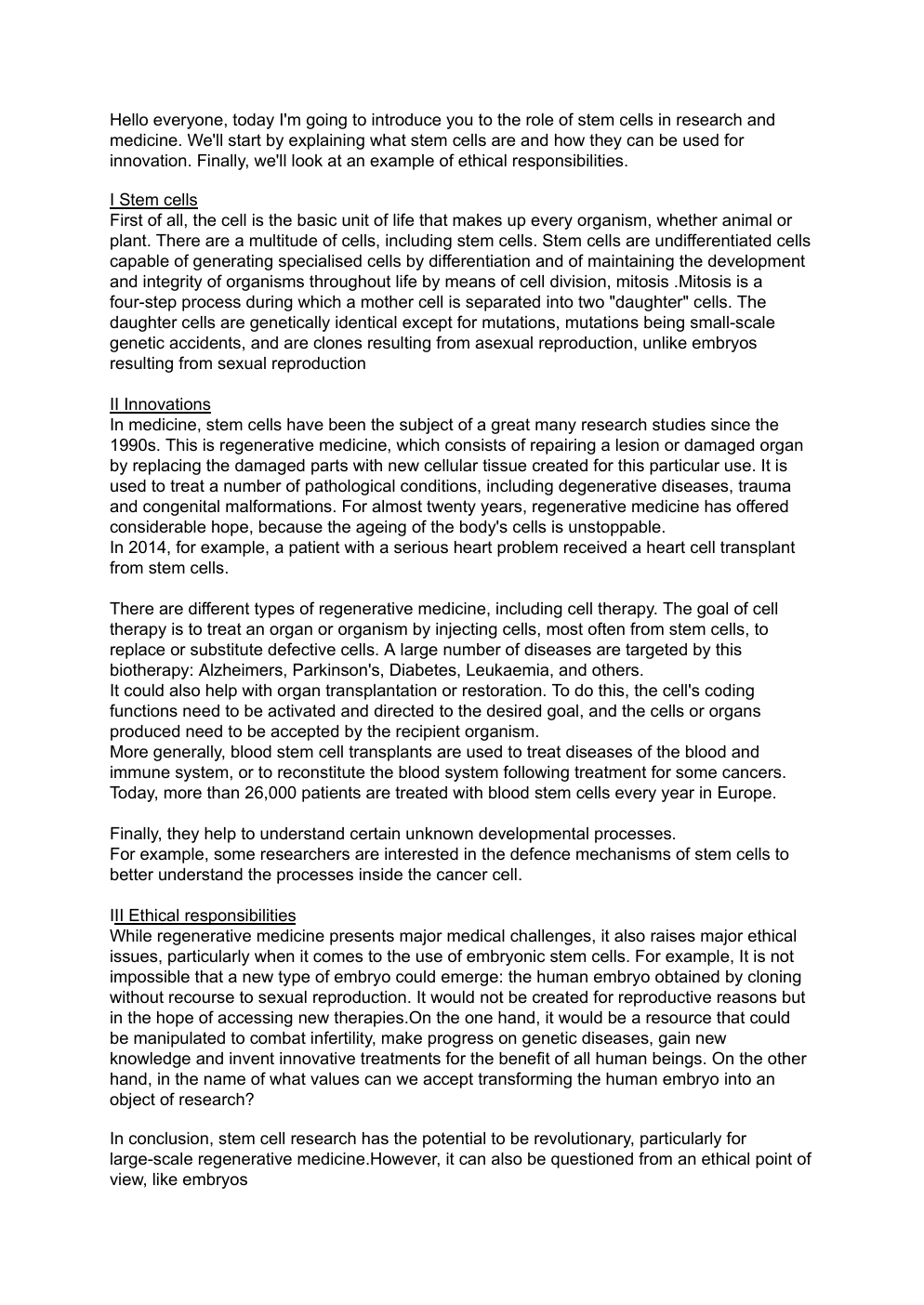exposé anglais stem cells
Publié le 08/05/2024
Extrait du document
«
Hello everyone, today I'm going to introduce you to the role of stem cells in research and
medicine.
We'll start by explaining what stem cells are and how they can be used for
innovation.
Finally, we'll look at an example of ethical responsibilities.
I Stem cells
First of all, the cell is the basic unit of life that makes up every organism, whether animal or
plant.
There are a multitude of cells, including stem cells.
Stem cells are undifferentiated cells
capable of generating specialised cells by differentiation and of maintaining the development
and integrity of organisms throughout life by means of cell division, mitosis .Mitosis is a
four-step process during which a mother cell is separated into two "daughter" cells.
The
daughter cells are genetically identical except for mutations, mutations being small-scale
genetic accidents, and are clones resulting from asexual reproduction, unlike embryos
resulting from sexual reproduction
II Innovations
In medicine, stem cells have been the subject of a great many research studies since the
1990s.
This is regenerative medicine, which consists of repairing a lesion or damaged organ
by replacing the damaged parts with new cellular tissue created for this particular use.
It is
used to treat a number of pathological conditions, including degenerative diseases, trauma
and congenital malformations.
For almost twenty years, regenerative medicine has offered
considerable hope, because the ageing of the body's cells is unstoppable.
In 2014, for example, a patient with a serious heart problem received a heart cell transplant
from stem cells.
There are different types of regenerative medicine, including cell therapy.
The goal of cell
therapy is to treat an organ or organism by injecting cells, most often from stem cells, to
replace or substitute defective cells.....
»
↓↓↓ APERÇU DU DOCUMENT ↓↓↓
Liens utiles
- exposé sur les violences animalières (ANGLAIS)
- Anglais exposé: Lincoln
- Exposé Anglais The printing press
- Exposé sur l'histoire du canada anglais
- exposé anglais


